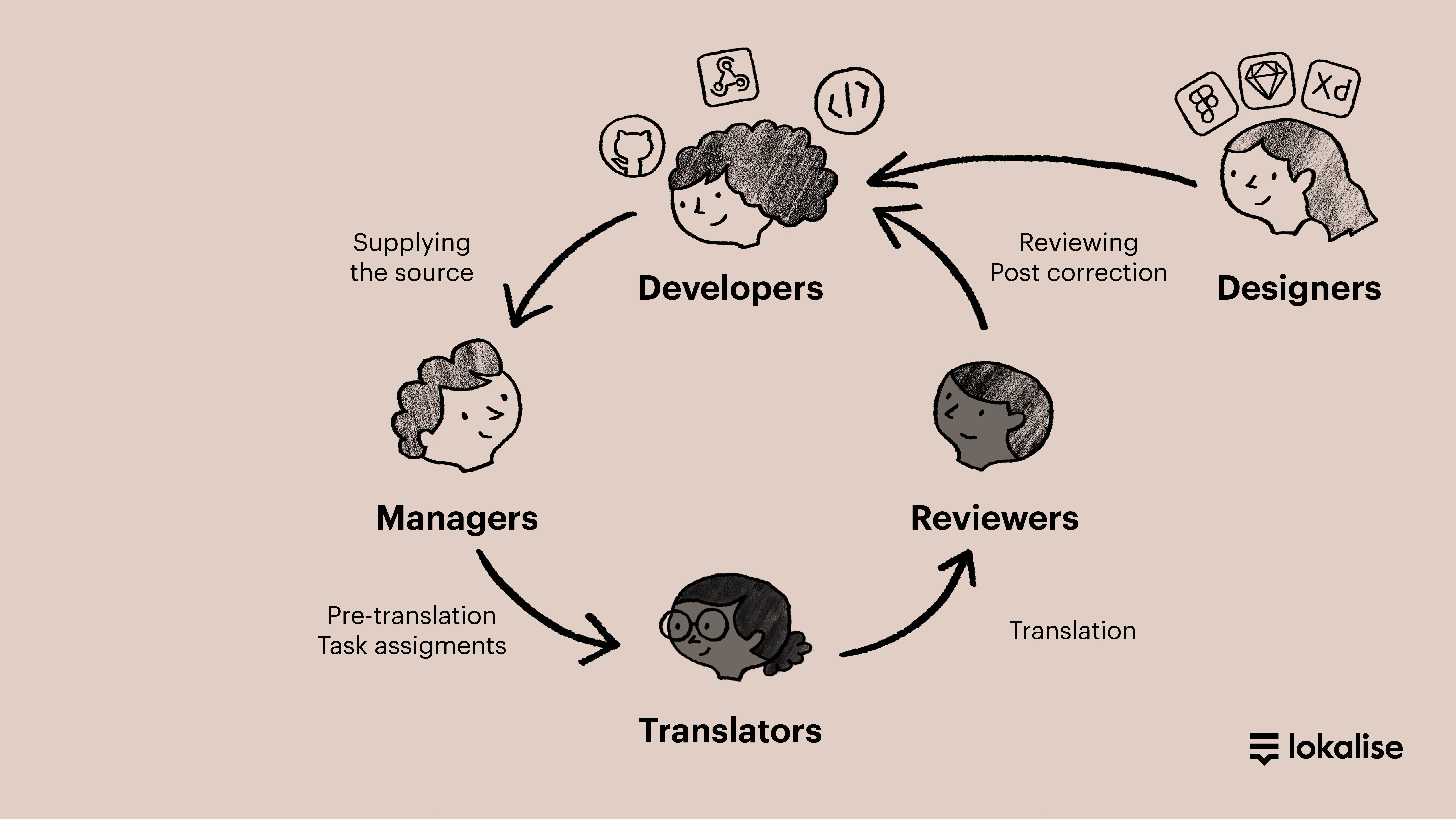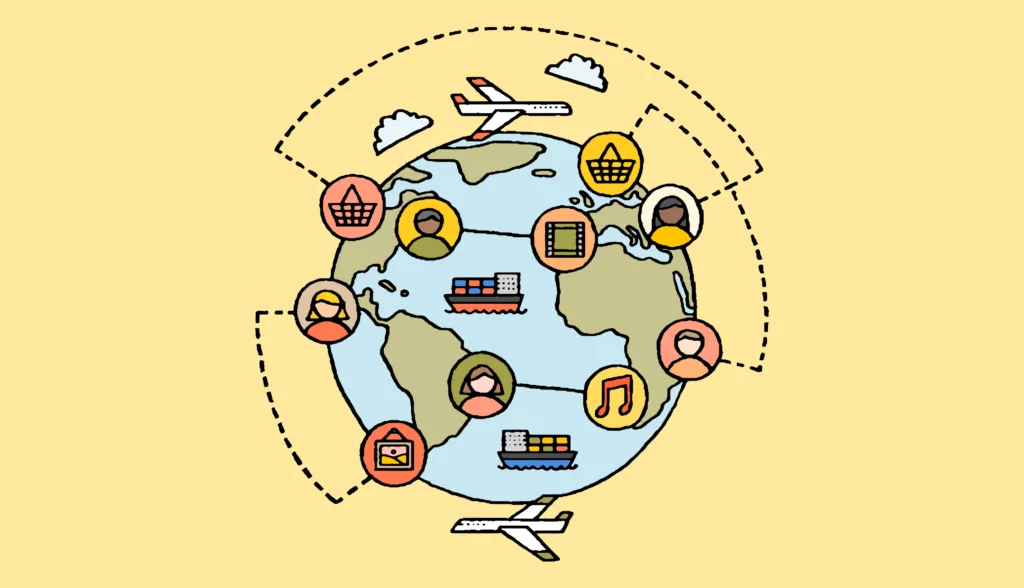The localization industry is growing each year, with no signs of slowing down. Language services represent a $55 billion market, according to market research by Nimdzi, and it’s projected to grow to $73.6 billion by 2025. Over half of the market involves translation services alone.
Your business likely has its own localization needs. But are you truly ready to scale your business internationally? Once you determine your localization strategy — taking into account which markets, languages, and cultures you’ll be navigating — you need to execute on the localization projects themselves.
And, as you can imagine, coordinating all of these efforts is a full-time job. It’s here where the role of a localization project manager becomes clear.
Why companies hire localization project managers
Localization project management is an in-demand discipline. Take a look at open roles at big companies — Spotify, Netflix, and TikTok — and you’ll see listings for localization project managers (PMs) as part of a larger localization team. They’re key business partners to make a localization strategy come to life.
So what do localization project managers do, exactly?
In a nutshell, they hold the entire localization process together. Localization project managers execute the localization strategy for an organization on a tactical level, collaborating with team members across the organization to move translation projects from start to finish.
Localization project manager job description
Typical responsibilities you’ll find on a job description for a localization PM include:
- Managing each step of the localization process: initiating, executing, and closing projects, from project kickoffs to creating detailed project plans and deliverables
- Overseeing end-to-end localization workflow across the team using translation management tools and systems
- Coordinating freelancers, localization vendors, linguists, subject-matter experts, and internal stakeholders
- Documenting each step of the process and optimizing it
- Communicating internally and externally with stakeholders to ensure effective cross-team collaboration
- Proactively assessing project risks through prioritization, bug management, and any other means necessary
- Balancing translation costs and project budgets
- Exploring, assessing, and selecting relevant AI technology to make the localization and linguistic tasks more efficient and less costly
- Defining the quality requirements and metrics for all content types that require localization
- Defining the most relevant KPIs, monitoring the metrics and providing inputs for ROI assessment on localization investments
Here’s what a job description looks like for a full-time role at Spotify:
What you’ll do
- Manage localization projects for product, marketing campaigns, CRM, e-mails, and web content, oversee localization and QA workflow, and make sure that every deadline is being kept.
- Ensure work is done within budget and that vendors adhere to their service level agreement.
- Lead meetings and work closely with cross-functional teams of designers, product owners, internal reviewers, engineers, marketers, and others across the company, passionate about Spotify’s success. You will facilitate communication of localization requirements, share insights, resolve any issues and ensure that we operate in line with our overall localization strategy.
- Share best practices and evangelize our localization efforts.
- Review, prioritize, and track the resolution of bugs that affect localized product content quality and functionality.
- Develop and implement processes to increase efficiency, and manage cost and time to market for localized versions.
- Together with your teammates, research and incorporate industry best practices and innovation into our localization and translation strategy.
- Test possible tools and technologies to enable the team’s strategic goals.
- Give input to budget and follow up on costs related to translations.
- Work on project retrospective with our stakeholders.
- Prepare comprehensive reports and presentations.
- Report to our Lead Localization Manager located in our New York HQ.
How localization project managers fit into the workflow
Every translation project has many moving parts, from the design phase to the final QA checks. Depending on the size and scale of the website, content, or product, the localization process can involve many types of collaborators: from developers, product managers, digital marketers, copywriters, and marketers to UX/UI/design professionals, translators, QA specialists, and reviewers.
To understand where localization project managers fit into the localization process, imagine your workflow as a continuous cycle with five steps:
Here’s the crux of what happens at each step:
- Start a new localization project: Your developers create the translation keys and store the code in a repository like GitHub, GitLab, or Bitbucket (which connect with Lokalise). You upload localization files to your TMS.
- Invite collaborators: Connect translators, editors, proofreaders to the project and assign tasks to them. Role assignments and user groups within your TMS allows managers to involve everyone who needs to be involved, from “need-to-know” billing owners or executive sponsors to team members assigned to a specific project.
- Translate: Determine which languages need translation and order from professional translators or use machine translation. See how much is done, what’s yet to be translated, and estimate time to finish. Use features like comments and chat to work together on checking translations, managing deadlines, or changing project requirements. Or you can set up an integration through Slack or email.
- Run QA checks: Detect errors using built-in automated QA checks the TMS provides – for example, inconsistent placeholders, leading/trailing whitespace, errors in numbers; QA professionals use the live preview on mobile device screens or browsers and in-context editors to ensure quality standards are met and everything’s in order. You can also add an additional layer of visual QA using two-way integrations with design tools like Adobe XD, Sketch, and Figma.
- Release: Once all levels of QA are finished, you can launch your product or digital content.
A localization project requires a high level of collaboration between cross-functional teams. Localization project managers serve as the point persons across the organization to make sure project schedules stay on time and budget.
Localization tools that support integrations with project management tools like JIRA, Asana, and Trello are important localization workflow features for your TMS so each team knows exactly what’s going on with the translation process, when milestones are achieved, and the target timeline.
No matter what’s going on in a translation project, your localization project manager will be able to know who to talk to and where you are in the process, making it transparent for everyone.
The profile of a successful localization project manager
Localization project managers oversee the entire localization process. Successful localization project managers possess a few key skills:
- They’re detail-oriented and organization-savvy and have strong problem-solving skills
- They can multitask and code-switch, interfacing with project team members across the organization
- They are technologically-minded and comfortable learning new platforms, software, and tools
- They are familiar with translation management systems (TMS), CAT tools, and databases
- They have excellent written and verbal communication skills
- They understand scope and risk management to keep projects on track
- They understand time and stakeholder management
- They can effectively communicate with partners and vendors, and have the ability to adapt localization projects based on feedback
- They coach, train, and lead team members
- They have experience working in global teams and they are culturally aware
While it’s not a requirement, many localization project managers also have translation skills and can speak multiple foreign languages.
That helps monitoring the quality level of translations. Localization managers should also understand the translation services market, so they can negotiate better terms with their partners and understand which requirements are realistic.
But as many PMs know, a job description only tells part of the story when it comes to managing complex localization projects. What does detail-oriented, tech-savvy, or leadership look like in practice? And how does collaborative localization software help localization managers do their jobs well?
How Lokalise helps localization project managers
Collaboration tools like Slack, Google Meet, and shared online documents are important communication methods for remote teams. However, they cannot handle the complexity of continuous software localization and the synchronous delivery of multiple software and content assets that modern, global companies typically localize. Neither can spreadsheets.
As Saskia Tennert, Localization Project Manager at Webgains shared, moving away from spreadsheets has been groundbreaking for the company:
“I needed an hour for all translations prep within a spreadsheet for a batch of keys and languages, but now that only takes about 15 min with Lokalise tasks feature.”
Thanks to features such as tagging, tasks, in-context editor, translation suggestions, and more – Lokalise has helped Webgains achieve cleaner code while adopting continuous localization as their main process.
Localization project managers need to find a way to create a single source of truth that makes it possible to juggle localization projects across products, websites, and blog articles in your organization.
Now, imagine working with 120,000 translation keys and using an SQL database to manage translations. Sounds scary, right? That was an everyday reality for the Localization Project Manager at Depositphotos before they switched to Lokalise. Tatiana Grebenyuk, their Localization Manager, shared the benefits that using Lokalise has brought:
“It’s convenient that you can write comments and attach screenshots, so as to provide translators with some context for a particular key.”
By efficiently coordinating the process, localization project managers can contribute to decreasing time to market if they are using the right tool.
For Ekaterina Sukhliaeva, Content and Localization Manager at Bending Spoons, using Lokalise was like “using a car instead of walking” and she saw it as “the next evolutionary step in the localization of digital products”
With Lokalise, localization project managers can:
- Manage the entire localization process from a single dashboard, track progress, and keep an eye on quality assurance (QA) issues.
- Create and assign translation and review tasks to contributors. Chain tasks and set up custom translation statuses.
- Invite in-house or outsourced collaborators to work on the project, create tasks, and provide feedback.
- Connect Lokalise to popular project management tools like Jira and Asana and better manage internal workflows.
- Track the progress of your project and run QA checks for inconsistent HTML tags, misplaced placeholders, leading and trailing spaces, and more.
- Use Automations to define specific rules for Lokalise to perform changes in a project automatically, and ensure the workflow moves from one step to another…
…and much more.
Localization project managers are in charge of making the entire process run smoothly and it’s no easy task. With Lokalise, you don’t have to worry about meeting your deadlines, translation errors, or complicated stakeholder management.
That way, localization teams can be involved and follow the progress of the l10n project in real-time and you, as the project manager, can ensure the right team has the right information at the right time.
The quality of your product and meeting market release deadlines depend on having visibility over this complex process.
Are you looking to streamline your team’s workflow, maximize productivity, and speed up expansion to other markets?
Lokalise’s customers report up to 37% shorter development release cycle and 8 times faster translation delivery.
Want to see what it’s all about?
- Try Lokalise for free or book a demo with our product specialists to explore how to make the most of your localization software.
- Get the free ebook with exclusive insights and real-life examples from 10+ companies, such as ActiveCampaign and Onfido, and learn how to assemble the best possible localization team.
Further reading
- Learn from the experts: how to build a strong localization team
- How to choose the best translation management system for your team and company
- Localization strategy: 5 tips from localization pros
- 5 localization issues project managers face and how to solve them
- Looking to hire a localization engineer? Read this first
- Design-stage localization: 3 reasons why it’s the solution for fast growing, agile companies





